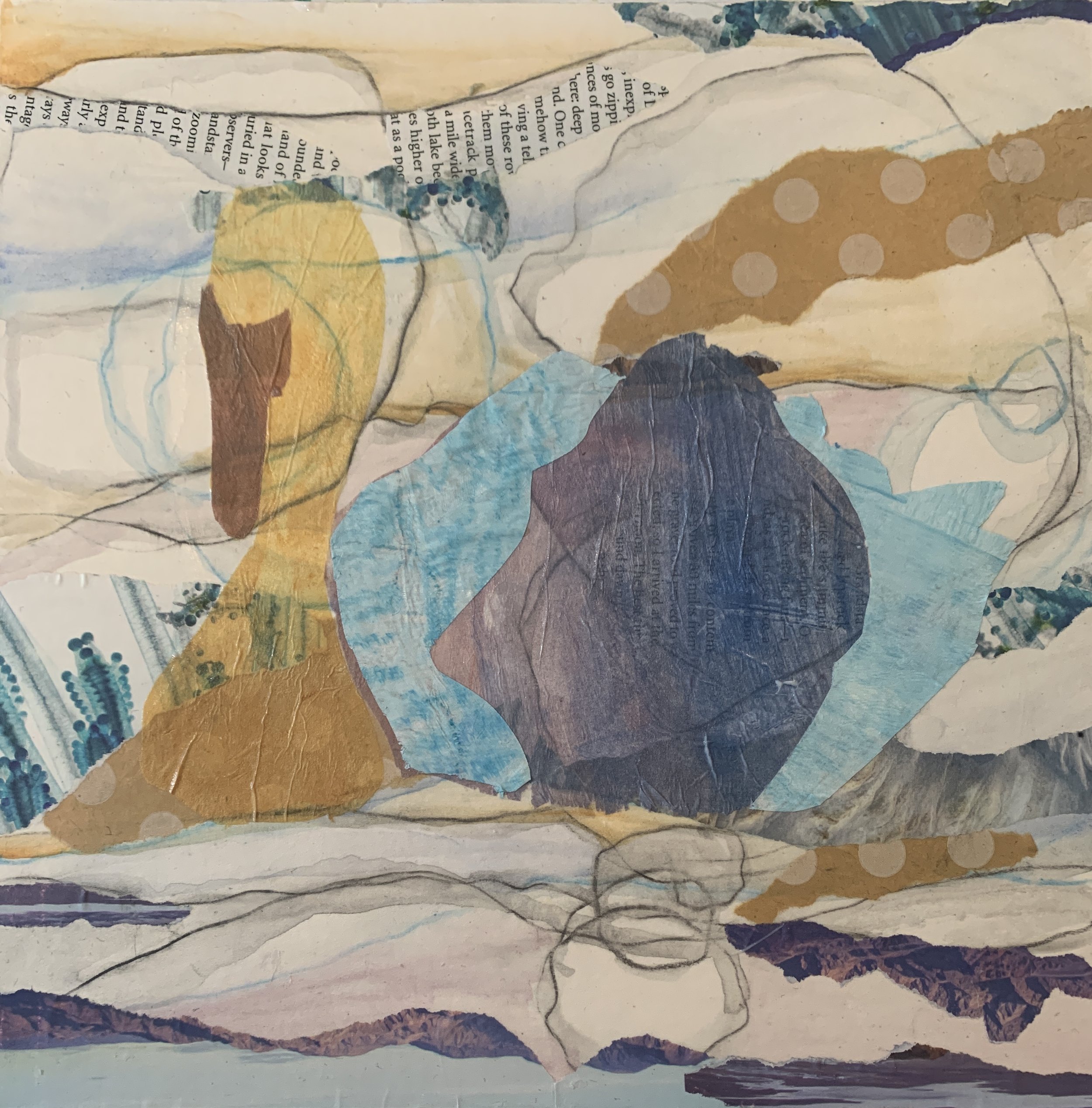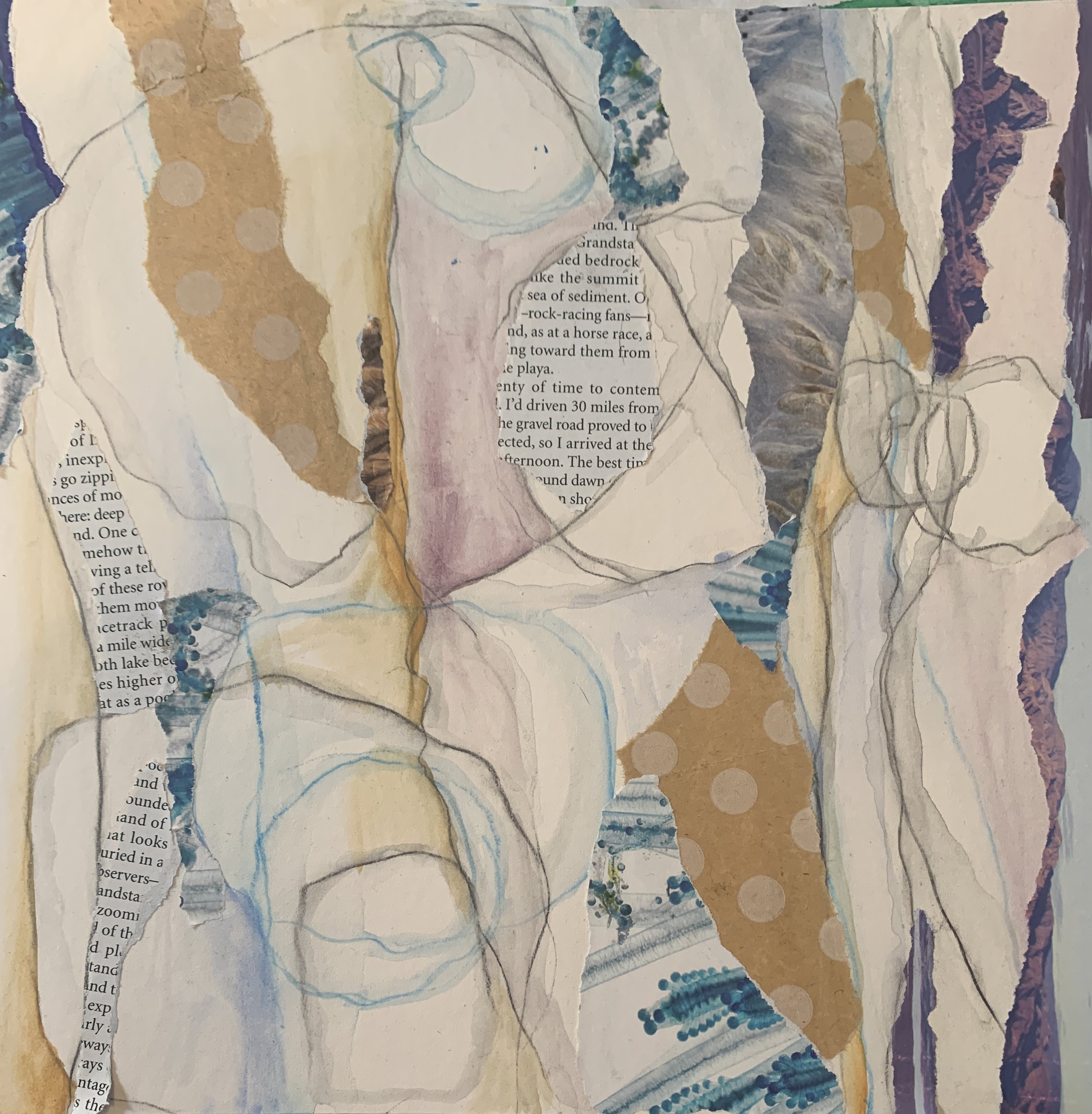Five Ideas for Approaching your Art with a Different Point of View.
How do you use point of view in your creative work to organize the sensory information or create a departure from reality for your audience? What does your viewpoint have to say?
Viewpoint & Distortion
Viewpoint:
the organization, identification, and interpretation of sensory information
point of view from which something is seen, presented, or approached
attitude toward something, not necessarily based on fact or knowledge
How can you play with a birds-eye, worms-eye, or an eye level point of view? What viewpoint will communicate the meaning that you want to convey?
I chose a birds-eye point of view for the ducklings. An appropriate view for such a small creature swimming on the edge of the pond.
Distortion:
departure from what is normal, usual, or expected
exaggeration to create a comic comic or grotesque effect
contouring twisting or deforming something
What might you distort or exaggerate to emphasize your meaning?
This image was inspired by the sailboats bobbing in the marina below my deck. I wanted to take away the typical colors and create the rhythm of the masts.
On Pointe 10” x 10” Hand Printed Collage, Ink, Graphite, and Acrylic on Paper
The mute swan is the subject of ballet’s and fairy tales. Introduced from Europe, they have taken over habitats and are quite territorial while nesting. The swan mates for life and are viewed as symbols of love. This is a departure from the black crow. I have decided to practice working on white in my process and a softer palette. I chose an eye level viewpoint so that it is as if we have stumbled upon the swan within its habitat.
I have long since been a fan of Georgia O’Keeffe. Her point of view expressed in her subjects has always spoken to me. Her subjects are similar to mine and her way of seeing the world from afar and up close is mesmerizing. Her art is both bold with color and soft with edges. She distorts her subject just enough to say what interests her and pulls the viewer into the scene with windows and leading lines.
On landscapes
“It was all so far away—there was quiet and an untouched feel to the country and I could work as I pleased.”
“I often painted fragments of things because it seemed to make my statement as well as or better than the whole could.”
On flowers
“When you take a flower in your hand and really look at it, it’s your world for the moment. I want to give that world to someone else. Most people in the city rush around so, they have no time to look at a flower. I want them to see it whether they want to or not.”
On being yourself
“I know now that most people are so closely concerned with themselves that they are not aware of their own individuality, I can see myself, and it has helped me to say what I want to say in paint.”
Here are 5 ideas for approaching your art with a different viewpoint.
Approach your subject from different viewpoints such as above, below, and/or eye level. Looking down at the world and up at the world allows the viewer to imagine something other than their own world. The feeling of flight or crawling are two entirely different emotions.
Zoom in on your subject: How does looking at an intensely close point of view change the perception. What would you choose to crop out in order to allow only a portion of the art to be seen?
Zoom through an opening of your subject: Looking through and past an object can be even more interesting. When you see more of the surroundings rather than the whole of the subject can create a suspenseful feeling to the work.
Choose an interesting format for your subject: We are used to seeing an artform within a rectangular format such as a picture frame, a TV screen, or written on a piece of paper. How does changing the format to a square, a scroll, a circle, or any other shape change the way the work of art is perceived?
Choose a center of interest or an overall composition: A strong center of interest can be created by the biggest, lightest, brightest, darkest point or all lines might lead to the one thing that is most obviously different. In an overall composition it is important to keep the eye moving from one part of the work to another because there is a similarity among the images, sounds, movements, words etc. Compositional principles are extremely important.
I would love to hear how your point of view reveals itself in your work? Post a comment Below
Thank you for being part of my journey.











